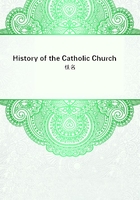
第291章
He sold or leased the property of his dioceses, kept a large number of benefices in his own hands solely for the sake of the revenue, appointed his own sons, his daughter, and his daughter-in-law to parishes to provide them with an income, built no schools, and allowed the churches to go into ruins. His children made no secret of the fact that they were Catholics, and the archbishop himself seemed to think that though Protestantism had been useful to him in life, the old religion would be preferable at death. In 1608 faculties had been granted to Archbishop Kearney of Cashel for absolving Magrath from the guilt of heresy and schism. Some years later he besought a Franciscan friar to procure his reconciliation with Rome, promising that for his part, if the Pope required it, he would make a public renunciation of Protestantism. This request of his was recommended warmly to the Holy See by Mgr. Bentivoglio, inter-nuncio at Brussels, but the love of the archbishop for the revenues of Cashel and of his other bishoprics and benefices seems to have proved stronger than his desire for pardon, for he continued to enrich himself and his friends at the expense of the State Church till his death in 1622. It was believed by his contemporaries that on his death-bed he abjured his errors, and was reconciled with the Church by one of his former religious brethren.[85]
The destruction of the religious houses and collegiate churches during the reigns of Henry VIII., Edward VI., and Elizabeth dealt a heavy blow to Irish education. Here and there through the country, clergy and laymen contrived to teach schools and to give their pupils a sound knowledge of the classics as well as of the language, literature, and history of their country. But the theological colleges were closed;Oxford and Cambridge were no longer safe training-places for Irish ecclesiastics, and unless something could be done at once there was grave danger that when the bishops and clergy, who were then at work, passed away, they would leave none behind them to take their places.
Fortunately the close and direct communication between Ireland and the Catholic nations of the Continent suggested a possible method of preventing such a calamity, by the establishment, namely, of Irish colleges in Rome, France, Spain, and the Netherlands. These institutions owed their existence to the efforts of Irish bishops and priests, and to the generous assistance of the Popes, and the sovereigns of Spain and France. They were supported by the donations of individual benefactors, by grants from the papal treasury or the royal treasuries of Spain and France, and by the fees paid by students, some of whom were wealthy enough to bear their own expenses, while others of them were ordained priests before they left Ireland so that they might be able to maintain themselves from their /honoraria/for Masses.